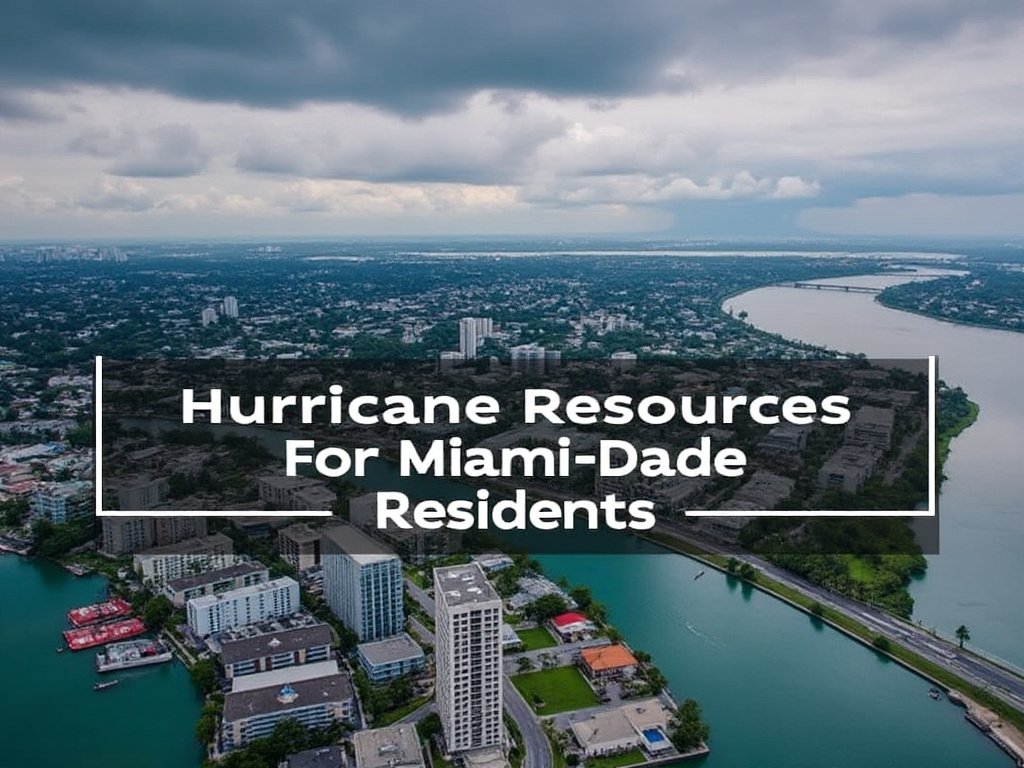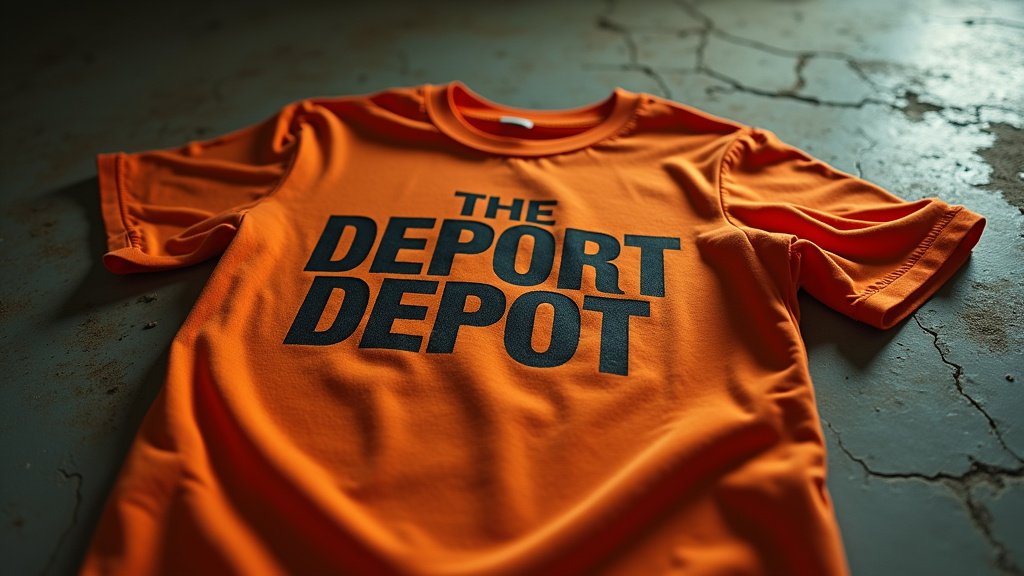If you’re a Miami-Dade resident, you know hurricanes are a yearly challenge from June to November. Storms can form rapidly, forcing you to act quickly. Whether you’re a long-time resident or new to the area, it’s vital to stay prepared. This guide provides essential resources to help Miami-Dade residents prepare for and recover from hurricanes. With insights into shelters, evacuation plans, and storm safety tips, this guide ensures that you and your loved ones stay safe throughout the 2024 hurricane season.
Why You Need to Prepare for the 2024 Hurricane Season
Forecasters are predicting a particularly active hurricane season for 2024. Miami-Dade County, with its long coastline and low-lying areas, is especially vulnerable to flooding and storm surges. Whether you live near the water or inland, it’s crucial to have a plan ready and the right resources at your disposal.
Miami-Dade County residents should already have received the Hurricane Readiness Guide by mail, but if you haven’t, it’s available online. You can download it from the official Miami-Dade Emergency Management website at Miami-Dade.gov/HurricaneGuide. This guide includes critical evacuation routes, shelter information, and emergency contacts.
1. Miami-Dade County Hurricane Preparedness Resources
Evacuation Zones
One of the first steps in preparing for a hurricane is knowing if your home is in an evacuation zone. Miami-Dade County’s storm surge planning zone map helps residents determine their risk level. You can easily find your zone by visiting the Miami-Dade County Storm Surge Planning website. It’s vital to monitor this before and during the hurricane season, as evacuation orders may be issued depending on the severity of the approaching storm.
Ready Miami-Dade App
Miami-Dade County offers the Ready Miami-Dade App, an invaluable tool for real-time storm updates, evacuation orders, shelter information, and more. The app is available for both iPhone and Android devices. Residents are strongly encouraged to download this app to stay informed during emergencies.
Emergency & Evacuation Assistance Program (EEAP)
Residents who require special assistance during evacuations—such as the elderly, those with disabilities, or individuals with medical needs—can enroll in the Emergency & Evacuation Assistance Program (EEAP). To register for this service, visit the EEAP Registration Page. Early registration is crucial, so if you or a family member may need this assistance, sign up before hurricane season peaks.
2. Preparing Your Home and Family for a Hurricane
Proper preparation can make all the difference when a hurricane strikes. Here are steps to ensure your home and family are ready when the storm approaches.
Stock Up on Emergency Supplies
Every Miami-Dade household should have an emergency kit prepared well before a storm is on the horizon. Stock at least three days’ worth of supplies, including:
- Non-perishable food (canned goods, granola bars)
- Water (one gallon per person per day)
- Flashlights and batteries
- First aid kit
- Necessary medications and medical supplies
- Pet food and supplies
- Hygiene products (diapers, feminine hygiene, etc.)
- Important documents stored in a waterproof container
You can find a more detailed checklist for emergency supplies in the Miami-Dade Hurricane Guide, downloadable here.
Home Preparations
Before a hurricane, securing your home can help prevent major damage. Here’s how:
- Hurricane shutters: Install these or board up your windows with plywood.
- Outdoor items: Bring inside any outdoor furniture, trash cans, or other items that could become projectiles in high winds.
- Tree trimming: Remove any weak or dead branches that could fall on your home.
- Gutters and drains: Clear them to prevent water accumulation and flooding.
3. Finding and Accessing Shelters in Miami-Dade
General Population Shelters
Miami-Dade County opens public shelters during hurricane emergencies. These shelters offer a safe place for residents who live in evacuation zones or whose homes are not hurricane-proof. While basic necessities are provided, you are encouraged to bring your own bedding, food, and any personal hygiene products you may need.
You can find a list of open shelters on the county’s emergency management page. For real-time updates, including shelter openings, visit Miami-Dade’s Shelter Page or download the Ready Miami-Dade App.
Pet-Friendly Shelters
If you have pets, Miami-Dade provides specific shelters that accommodate animals. However, pet shelters often have limited space, so pre-registration is encouraged. Be sure to bring a leash, food, a pet carrier, and any medications your pet may require. Check out the available shelters for your pets and register at Pet Shelter Registration.
Special Needs Shelters
Residents with medical needs or disabilities can access specially equipped shelters. These shelters offer medical staff and essential supplies to care for individuals who require assistance. Pre-registration is required to ensure proper accommodations, so sign up via the Emergency & Evacuation Assistance Program.
4. Post-Storm Recovery: Staying Safe After the Hurricane
Even after the winds die down and the skies clear, the risks from a hurricane linger. Here’s how to stay safe and recover after the storm.
Power Outages
Power outages are common after hurricanes, and they can last from a few hours to several days depending on the storm’s impact. Report any downed power lines to FPL (Florida Power & Light) by calling 1-800-4-OUTAGE (1-800-468-8243) immediately. Avoid walking through flooded areas where live electrical lines might be submerged. If you experience a power outage, stay updated by following FPL’s Power Outage Tracker online.
Returning Home Safely
Once authorities declare it safe to return home, be cautious of debris, standing water, and potential structural damage. Avoid driving through flooded streets and check for downed power lines around your home. Always listen to advisories from local government authorities about water safety before using tap water.
Debris Removal
After a hurricane, fallen trees, shattered glass, and other debris can pose serious risks. Use extreme caution when handling debris, and always wear protective gear, such as gloves and sturdy shoes. Miami-Dade provides a debris pickup service following hurricanes; check the Debris Removal Page for updates on when services will be available in your area.
5. Community Support and Long-Term Recovery Resources
Once the storm has passed, recovery can be a long and daunting process. Thankfully, there are a variety of resources available to assist Miami-Dade residents.
FEMA Disaster Assistance
If your home is damaged during a hurricane, you may qualify for FEMA disaster relief funds. FEMA provides financial assistance for temporary housing, home repairs, and other hurricane-related expenses. Residents can apply online at FEMA.gov or call the disaster assistance hotline at 1-800-621-FEMA (1-800-621-3362).
Nonprofit and Community Support
Nonprofit organizations in Miami, such as Catalyst Miami and United Way of Miami-Dade, offer support to residents after hurricanes. These groups help with everything from mental health services to assisting with insurance claims and connecting residents to recovery programs. Visit Catalyst Miami’s Resource Page for more information on how to access these resources.
Mental Health and Crisis Counseling
The emotional toll of hurricanes is real, especially for families who experience damage or loss. Crisis counseling is available through local mental health services. The Red Cross offers counseling services, and you can also contact Miami-Dade’s Community Action and Human Services department at 305-633-6141 for mental health support.
FAQs
What should I do if I live in an evacuation zone?
If you live in a designated evacuation zone, it’s essential to follow local government evacuation orders. Know your route and the location of nearby shelters by visiting Miami-Dade’s Evacuation Page.
Where can I get sandbags before a storm?
Miami-Dade typically opens sandbag distribution sites before a hurricane. Visit the county’s Emergency Management Website for information on where to find sandbag locations.
What kind of insurance do I need for hurricane damage?
Review your## FAQs (Continued)
What kind of insurance do I need for hurricane damage?
Standard homeowners insurance usually doesn’t cover flooding or hurricane-related damage. It’s essential to have separate flood insurance through the National Flood Insurance Program (NFIP). Additionally, review your current policy with your insurer to ensure adequate coverage for wind and water damage. Visit FEMA’s Flood Insurance Page for more details.
Can I take my pet to a shelter?
Yes, there are designated pet-friendly shelters in Miami-Dade County. Pre-registration is typically required. Make sure to bring your pet’s food, leash, vaccination records, and medications. Visit the Miami-Dade Pet Preparedness Page for more information and registration details.
How can I volunteer after a hurricane?
Several organizations need volunteers to assist with post-hurricane recovery efforts. You can volunteer with local groups like The Red Cross, United Way Miami, or other nonprofit organizations involved in cleanup and relief efforts. Visit Volunteer Miami to sign up and learn more about current opportunities.
How long do power outages last after a hurricane?
Power outages can vary greatly depending on the severity of the storm. Florida Power & Light (FPL) prioritizes critical infrastructure like hospitals, and residential areas may take several days to have power restored. Be sure to have an emergency generator or battery-powered equipment to maintain essential services during outages. You can track real-time updates and restoration efforts through FPL’s Storm Center.
Conclusion: Stay Prepared and Stay Safe
Hurricanes are a fact of life for Miami-Dade residents, but with the right preparation and knowledge, you can protect yourself, your family, and your property. By taking the time to stock up on supplies, secure your home, and have an evacuation plan, you’ll be ready when the storm hits. Don’t wait until the last minute — start preparing today by reviewing the resources in this guide and keeping up-to-date with Miami-Dade’s official emergency alerts and advisories. Be sure to download the Ready Miami-Dade app, sign up for local alerts, and register for the Emergency & Evacuation Assistance Program if you need it.
As we head into the 2024 hurricane season, remember: the key to staying safe is to stay prepared.





